In New York City, the possibilities are endless when it comes to stimulating and family-friendly things to do anytime of the year. However, this notion has been put to the test since March. Even though options may be limited during this pandemic, we have managed to stay active outdoors while maintaining a distance from others during our summer 2020 staycation. We have doubled down on our favorite places to play and hang out around New York City while I have dug deeper into the fascinating histories of this city.
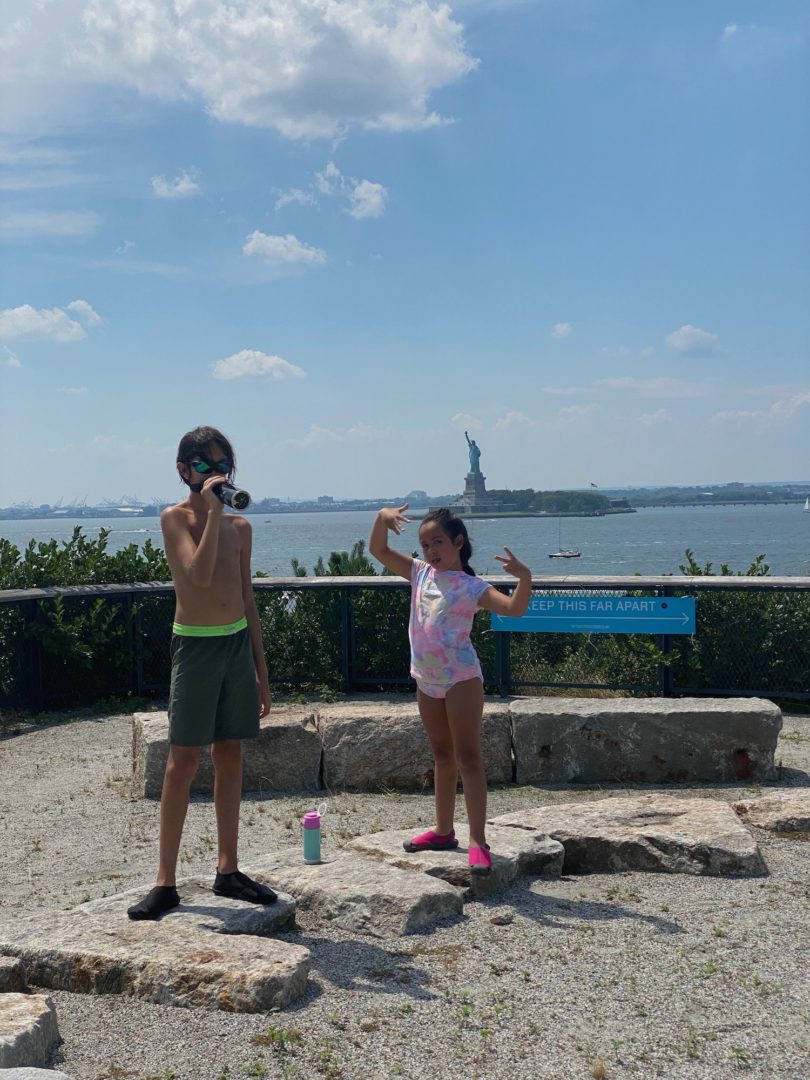
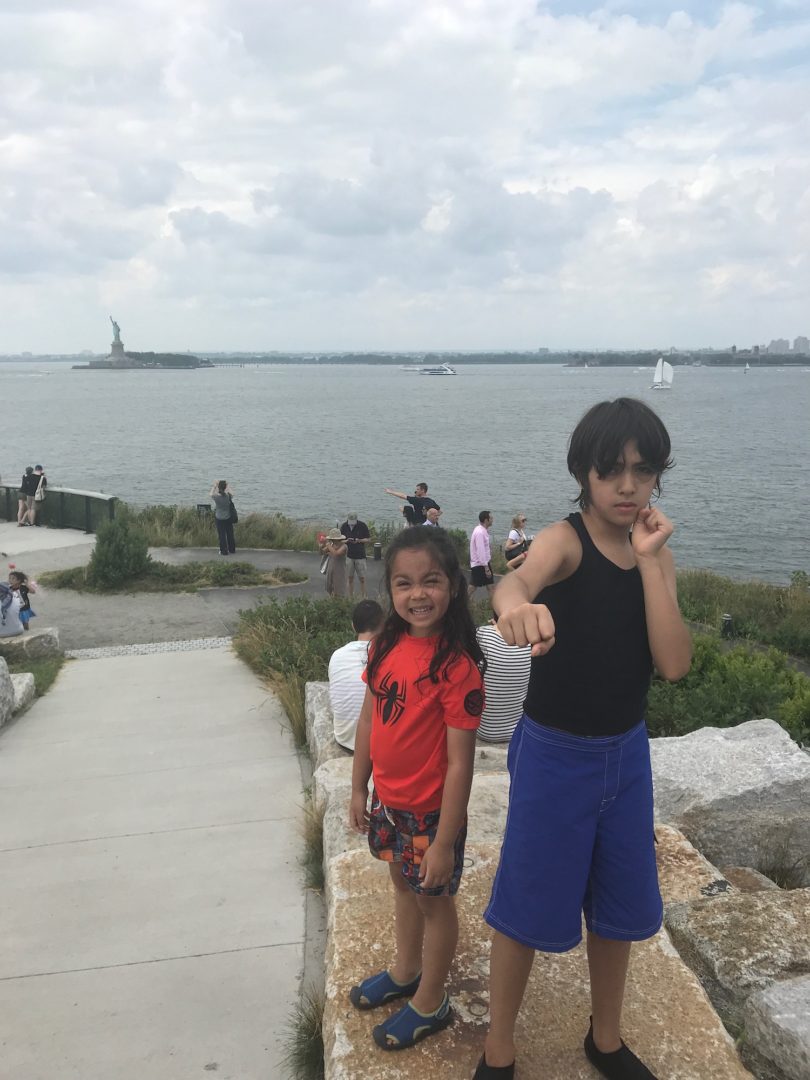
Every summer we make sure to visit Governors Island at least once, a tradition that started about seven years ago. This summer we were part of the first wave of visitors to return right after the island reopened to the public last month. This idyllic escape from city life offers sweeping views of Lady Liberty, lower Manhattan, Brooklyn and New Jersey. Let’s take a closer look at Governors Island, past and present.
Getting there from Brooklyn
Normally, there is a Brooklyn ferry that runs from Pier 6 of Brooklyn Bridge Park to Governors Island. This pier can be easily reached using public transportation but for drivers, there is a conveniently located parking garage, City Parking Brooklyn Bridge LLC, that we have used numerous times over the years with no complaints. On a side note, Brooklyn Bridge Park offers a wide range of recreational activities including a water park, playgrounds, basketball courts, soccer fields, volleyball courts and so much more along the waterfront. As appealing as this park may be, catching a ferry to Governors Island is a worthwhile experience for locals and tourists.
These are not normal times and this summer, due to Covid-19 restrictions, the Brooklyn ferry is only available at the Red Hook/Atlantic Basin (corner of Pioneer St. and Conover St., Brooklyn, NY 11231). This is a fairly quiet neighborhood with plenty of street (free) parking that can also be reached using public transportation. In order to control the number of passengers on the ferry, round-trip tickets must be purchased ahead of time through the website. The tickets are $3 for adults, free for children 12 and under, seniors, NYCHA residents, IDNYC holders, current and former military service members and Governors Island members. The ferry is about five minutes or less and nothing to be concerned about for those of us prone to seasickness.
The Island
Walking onto the island is like taking a step back in time and into a small town. I have always been curious to learn more about the abandoned buildings on the historical side of the island which until now I had vaguely understood as part of a military base. The other half of the island is the more recently developed and expansive landscape of sprawling lawns, hills and natural beauty.
This funky little island right in the middle of New York City’s harbor has a peculiar history. It was unknown to New Yorkers until it was opened to the public in 2003 and literally put on the map by the Department of Transportation and Google Maps because until then it had been omitted from maps of this area. In 2020, many New Yorkers may think of Governors Island as a quick little get-away but most are probably unaware of its long history and have probably never thought much about how or why this island had suddenly popped into existence. Over the past decade, it has become an increasingly attractive destination complete with an array of activities for kids and adults, public art, festivals and so much more.
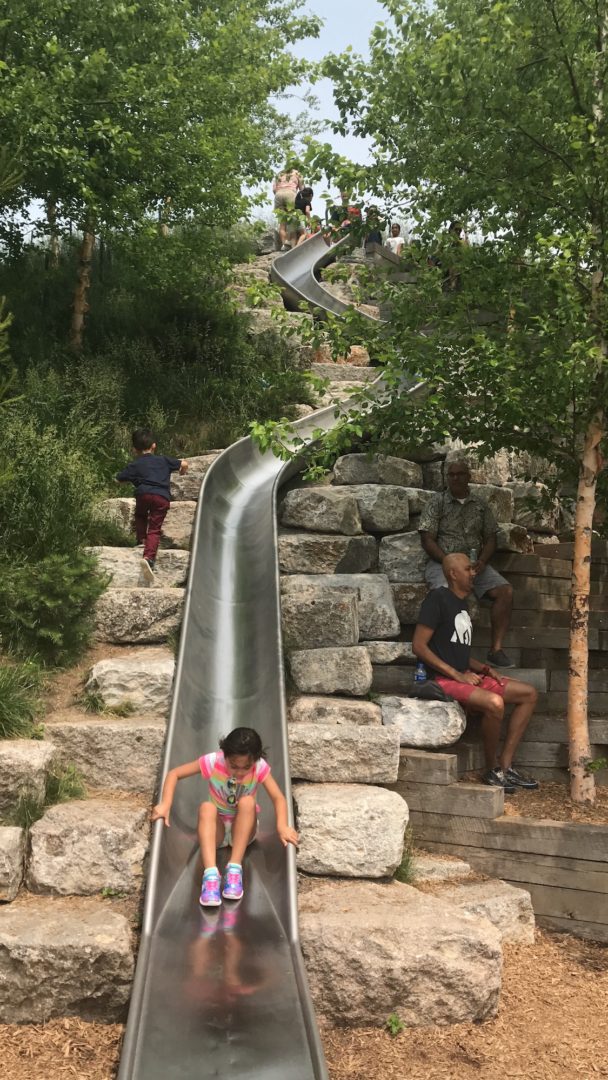

Pagganack/Nuttan/Governors Island
This island’s history goes back to the indigenous tribes of this region, the Lenape, the original and undisputed first New Yorkers. Prior to European colonization, the Lenape called this island Pagganack which translates as “Nut Island” because of its abundance of hickory, oak and chestnut trees. In addition to gathering nuts, this island was a fishing camp for the Lenape. Their first contact with a non-Native took place in 1613, when Juan (Jan) Rodriguez arrived on a Dutch ship called Jonge Tobias. Rodriguez is believed to have been of African and Portuguese descent, was born in what we know as Dominican Republic, and was voluntarily left behind on Governors Island by the ship’s captain as a free man. The history of Juan Rodriguez has been carefully pieced together by historians and based on this scholarship it is evident that this man from the Dominican Republic was the first non-Native New Yorker. Long story short, it is possible that Rodriguez who had learned to communicate and live among the Lenape, was a middle man for the trade relations between the Lenape and the Dutch who returned in 1614.
In a deal similar to the notorious purchase of Manhattan by the Dutch from the Lenape, the Dutch “purchased” Nuttan Island (the Dutch version of Pagganack) in 1637 for two ax heads, a string of beads and some nails. Following this fraudulent transaction, the Lenape were forcefully and violently pushed from this region by the Dutch, then the British and eventually the United States government. I recommend listening to a podcast by the Bowery Boys for its thorough overview of Lenape history, a history that is sadly overlooked in New York.
When the island was seized by the British from the Dutch in 1664, it was renamed to Governors Island because the royal governor was given control over this area of land that was used for game preserve, to quarantine immigrants and to rent out as farmland. The British did not hand over this island until 1783 after which it became a military base and army outpost through the 1960s. Thus it was inhabited by the military and its families and later the Coast Guard and their families through 1995. Governors Island was a fully functioning small town with forts, administrative buildings, recreational buildings, schools, houses, pools, churches, jails and even a Burger King that served beer until the island was closed to the public in the mid-1990.
Governors Island was never really integrated into New York City. It was technically owned by the federal government until it was sold to the city and the state for $1. This deed made it very clear that this land could not be handed over to greedy real estate developers such as Trump to open casinos or other profit-making schemes that would benefit a few and not many. Instead the city and state (eventually the city took full control under Bloomberg) were committed to developing this island into a recreational space open to the masses. This was overseen by the Governors Island Preservation and Education Corporation (GIPEC).
Governors Island opened to the public with guided tours in 2003 when little had been changed since its closure in the 1990s. Over the course of the next several years, the island was thoughtfully developed and incorporated into the community and culture of NYC. This massive redevelopment includes a school, The Urban Assembly New York Harbor School, which opened its doors in 2010 to high school students from all five boroughs and whose daily commute includes a ferry ride to and from the island. The island is currently overseen by the Trust for Governors Island.
For a more detailed history of Governors Island, check out another podcast by the Bowery Boys. It is an entertaining and informative look at the past 400 years.
Bike Rentals, Playgrounds & More
Our first visit to Governors Island happened about ten years after the island had opened to the public and by this point it had plenty to offer. In the past, we stumbled upon a French-themed amusement park, jazz festivals, artist residencies in the old houses of the island’s former residents on the historical side of the island; a miniature golf course and treehouse on the parade grounds; playgrounds, bike rentals, hammocks, picnic grounds and more.
We like to rent bikes through Blazing Saddles Bike Rental and on our most recent visit, we paid $175 for four bikes: one island cruiser, $25 all day versus $20 for 2 hours, and three pedal cars, $50 for all day versus $30 for an hour and $20 for 30 minutes. When the kids were much smaller, we rented a large surrey which was very awkward to maneuver. I much prefer to have four separate vehicles now that the kids are older. Visitors to the island are welcome to bring their own bikes onto the island.
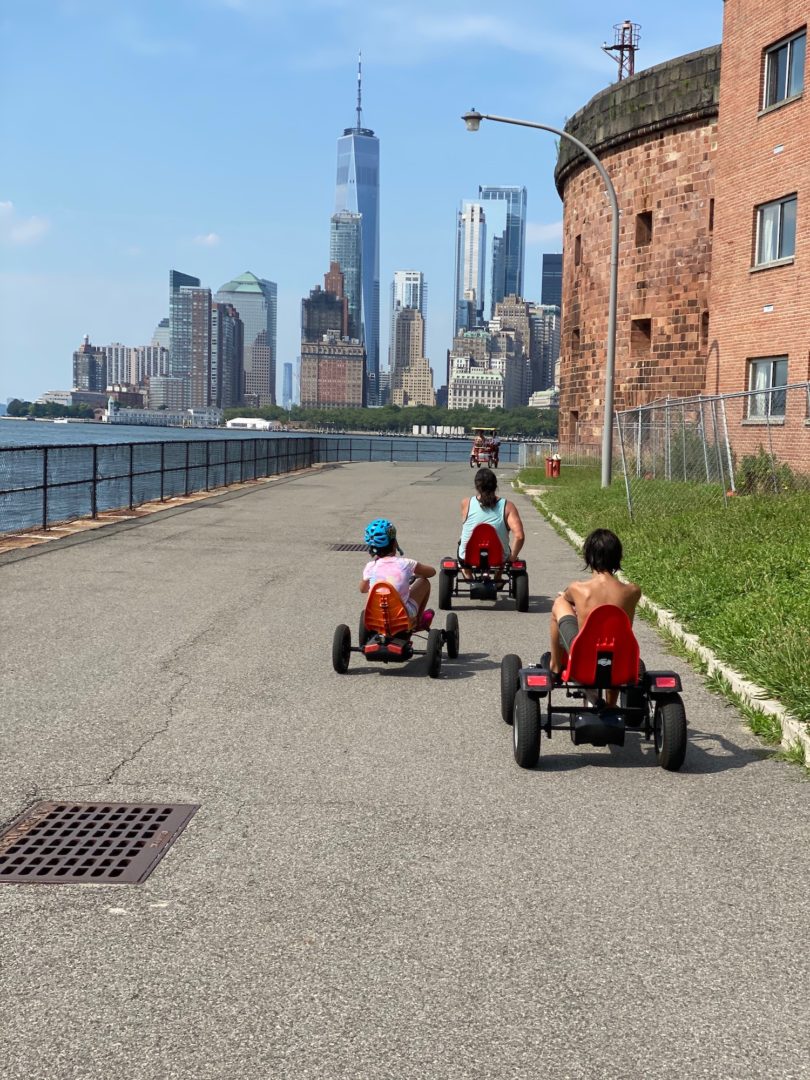
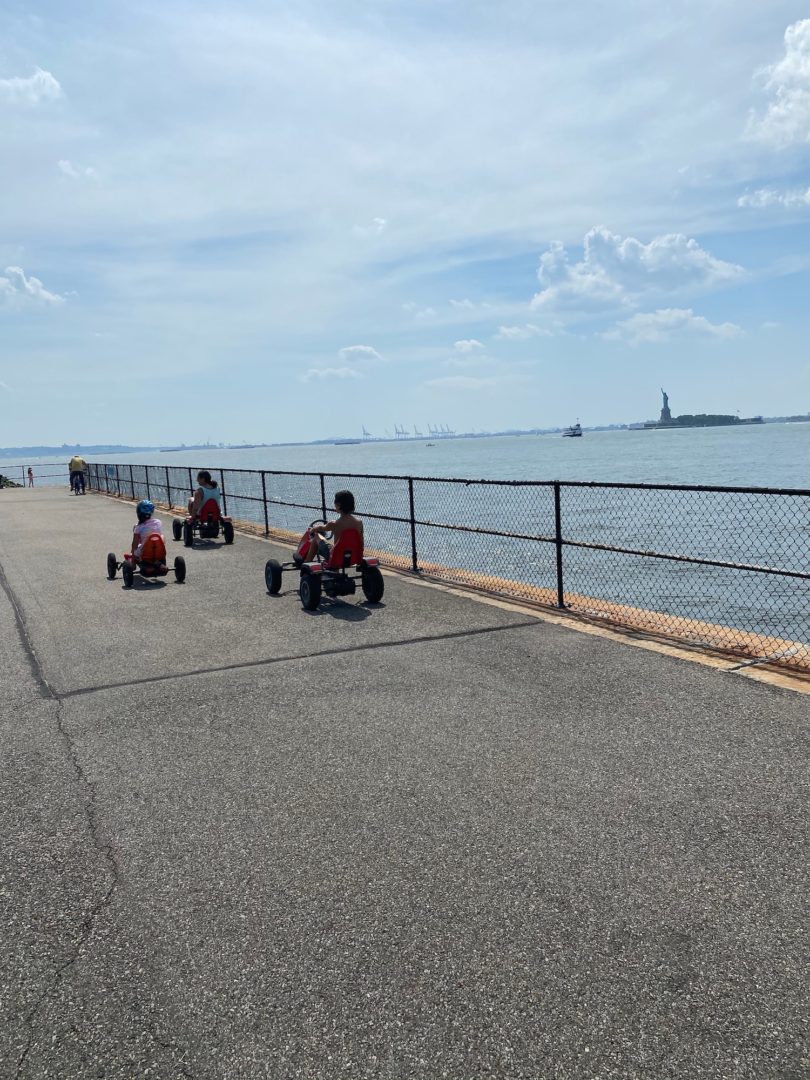
Gentle Reminder
A few words of wisdom for bike owners and renters. YOU ARE STILL IN NEW YORK CITY AND IT IS THE 21ST CENTURY. The utopian vibe of Governors Island may lead to the false pretense that it is okay to let one’s guard down and for the most part I would encourage this state of mind. Until last month, we did not have any experiences that would have led to the reminder that we are still in NYC and it is 2020. Whenever we rented bikes in the past, we rode around the island without a care in the world. We parked our bikes without worries whenever we stopped to play or eat and barely kept an eye on our bikes while they were parked. Last month, we parked our four rentals at the base of Outlook Hill where they were out of site while we climbed up the hill to take in the views. When we returned, two of the pedal cars were gone. Thankfully the bike rental shop replaced these bikes for us and did not hold us responsible because the thieves would not have been able to get very far as this island is small and they would not have been able to leave the island with these bikes. It was a wake-up call to maintain our usual city awareness and reinforced that when we do bring a bike of our own onto the island, we must be prepared to lock it up when it is not attended. No need to be on high alert but just be careful and exercise common sense when it comes to your personal belongings.
Glamping on Governors Island?
Yes, as absurd as it may sound, for roughly $1000, a couple or a family of two adults and one child can stay overnight in a lush air-conditioned tent or trailer. This is a service that is offered by Collective Retreats, a company that specializes in five-star camping experiences. It opened to the those willing and able to pay this amount last summer. I was unsure what to make of these tents when we rode past them last year and only recently learned more about this business. After reviewing the rates and running through some of the reviews, this is clearly not something that I would sign up for (or pay for), especially since a tent to accommodate a family of four would exceed $1000. Not worth the price to sleep on a deserted island with no overnight ferry access in case of emergency and limited food options. I don’t think we are missing out and we are more than happy to stick with our day trip experiences complete with a scaled-down budget that covers a ferry ride, bike rental and food for a family four.
Collective Retreats seems a little out of touch with the overall feel and mission of the island because it is clearly a profit-making scheme targeting a very small portion of the population. Hopefully, this type of business venture is contained and does not open the door for other real estate developers and entrepreneurs to profit off the island. Governors Island must remain a quiet and affordable sanctuary open to the masses.
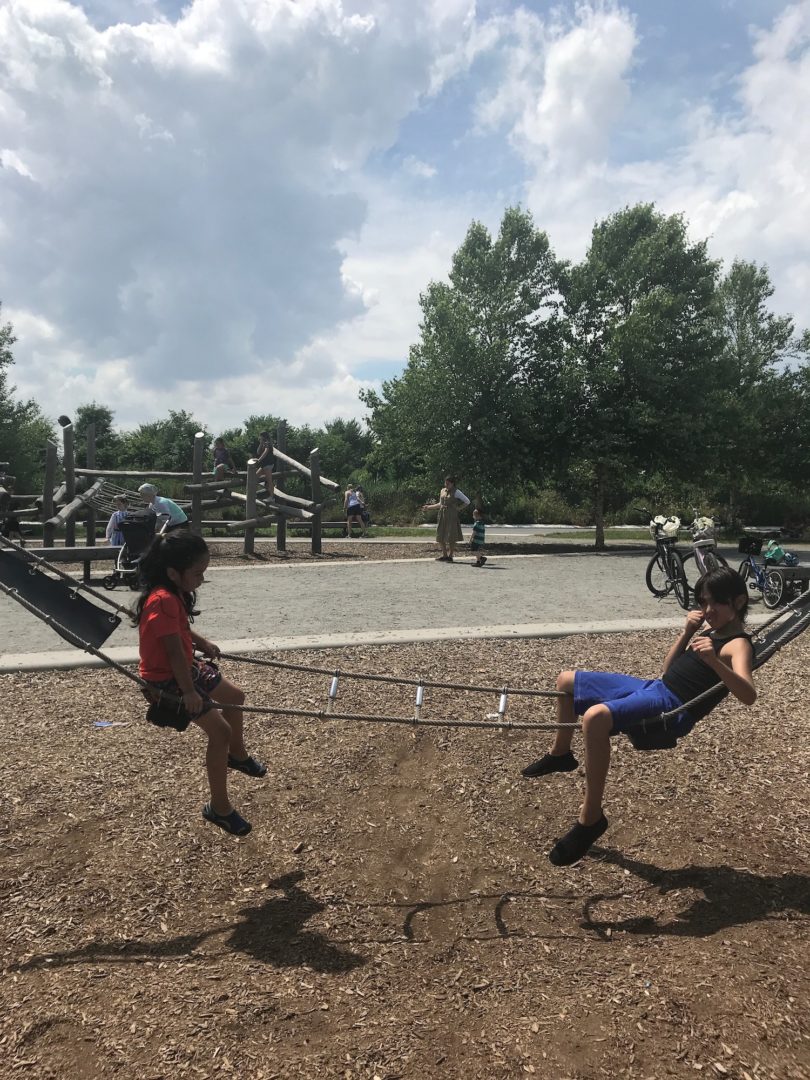
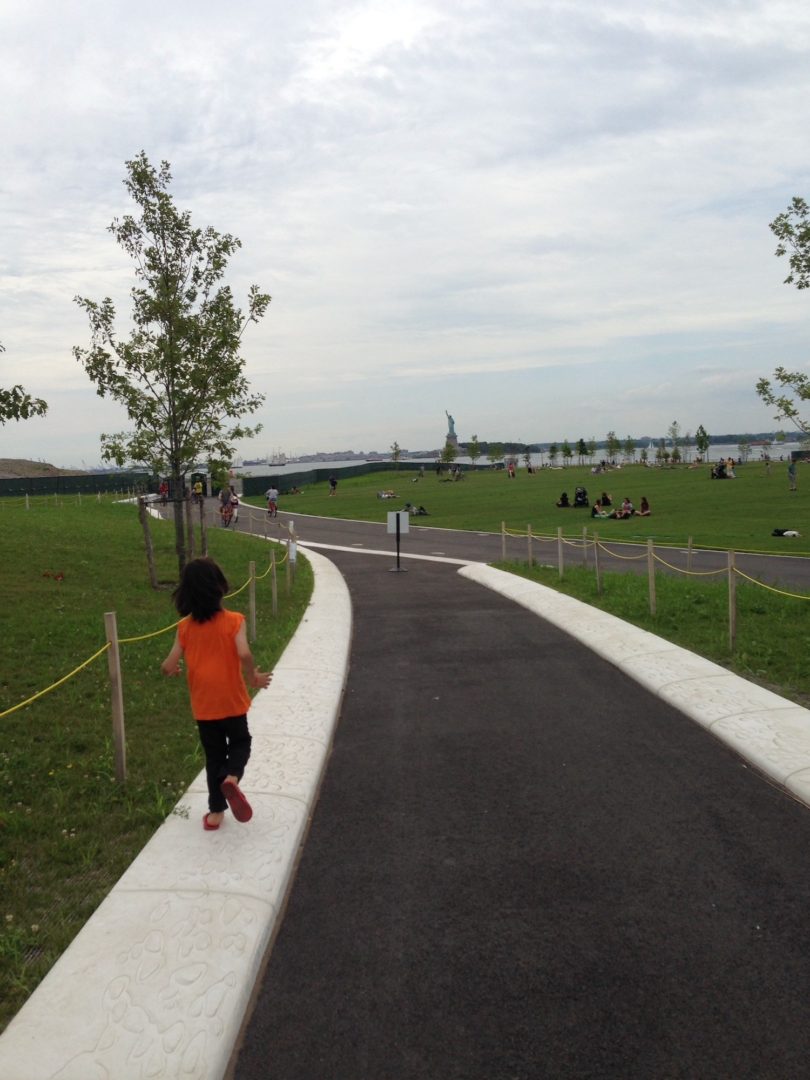
Food
We have relied on a variety of food trucks parked in front of Ligget Hall which was built in the 1920s by the architectural firm of McKim, Mead & White. Ligget Hall cuts across the center of the island dividing the historical section of the island from the newer half that was built on landfill from the digging of a subway line in the early 1900s. The trucks offer an array of diverse food and drink options that have satisfied on a consistent basis. There are plenty of seating options in this area that is adjacent to the playground and the sprinklers. This area of eating options has held our attention for years but two restaurants have recently opened in other parts of the island specializing in oysters and tacos. There is also a brick oven pizza stand near the Parade Grounds. Finally, there is ample space across the island to have a picnic with a healthy supply of table, chairs and lawns to spread out. There are plenty of beautiful and open spots ideal for large parties and in the past we have witnessed birthday, weddings and other parties. Certainly an option and worth the effort for those willing to carry all of the supplies onto the island by ferry.
Art
Under normal circumstances, there are a number of indoor and outdoor art installations across the island that are open to the public, some resulting from artist residencies, as well as interactive art workshops and creative experiences for children. These public art initiatives are closely aligned with this island’s mission to embrace a broad public and for that we are grateful. These activities are scaled back this summer with all indoor spaces remaining closed for the time being but there are public installations scattered around the island that compliment the surrounding vistas.
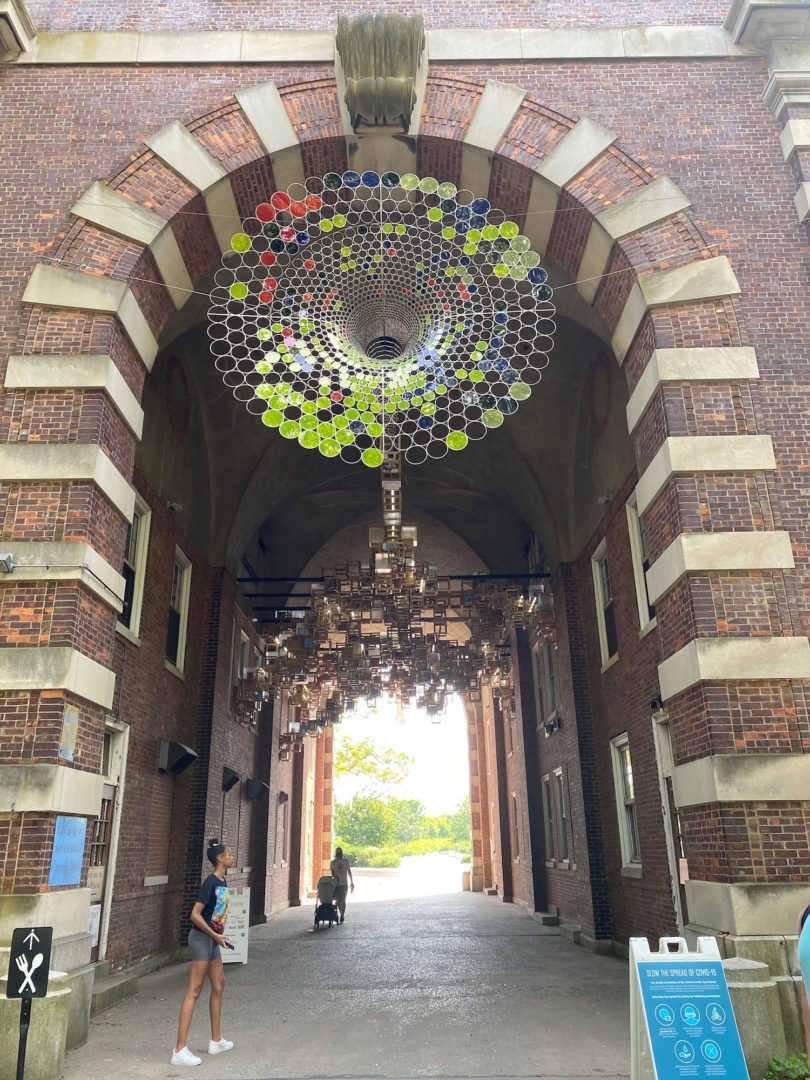

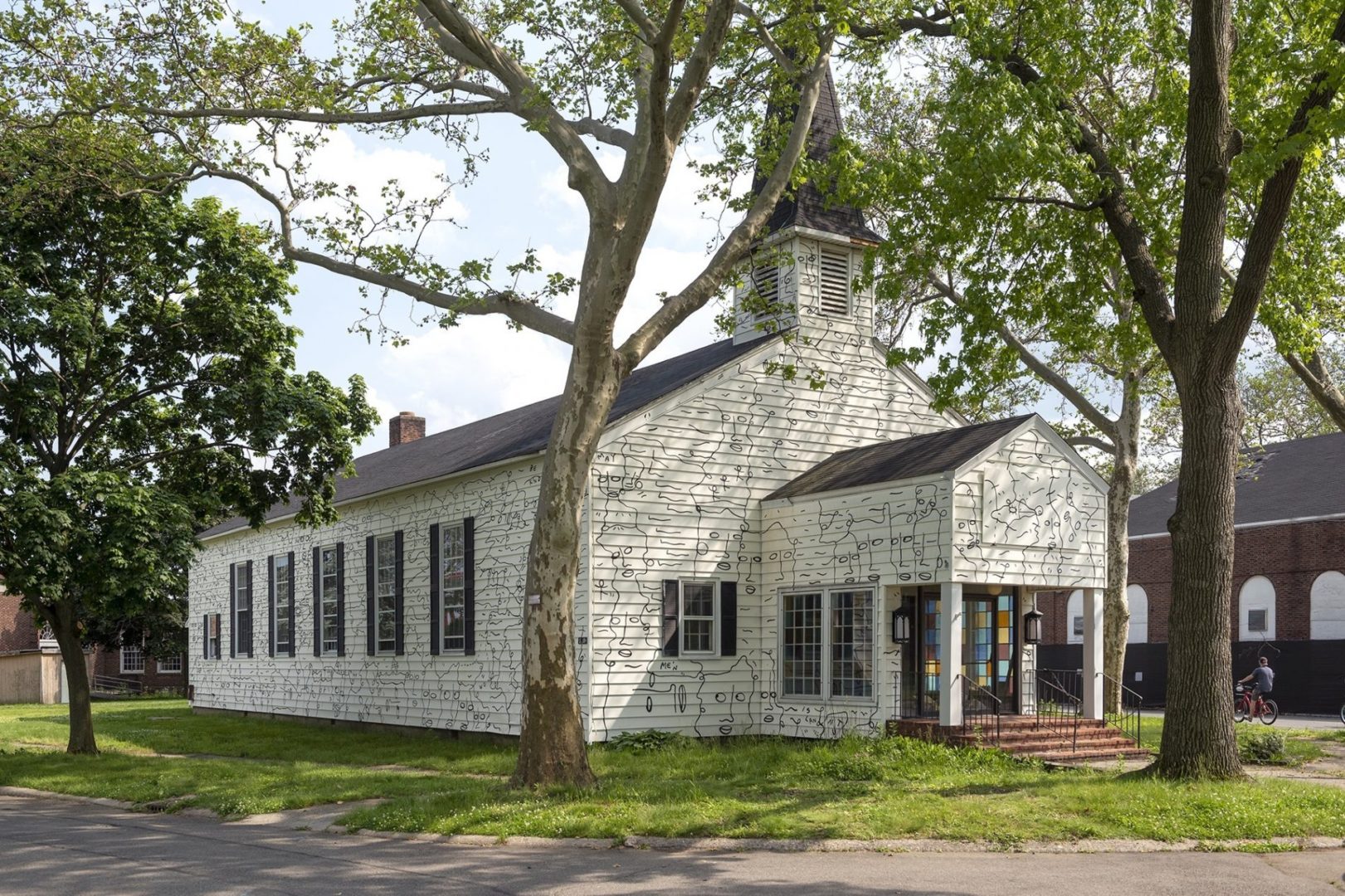
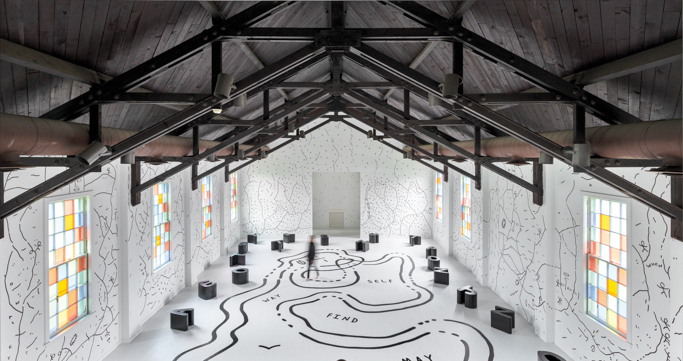
For more posts about art around New York City and abroad click here.
For more about family travel, local (NYC) and abroad, click here.
Click here if you are looking for a little guidance planning your next vacation.





